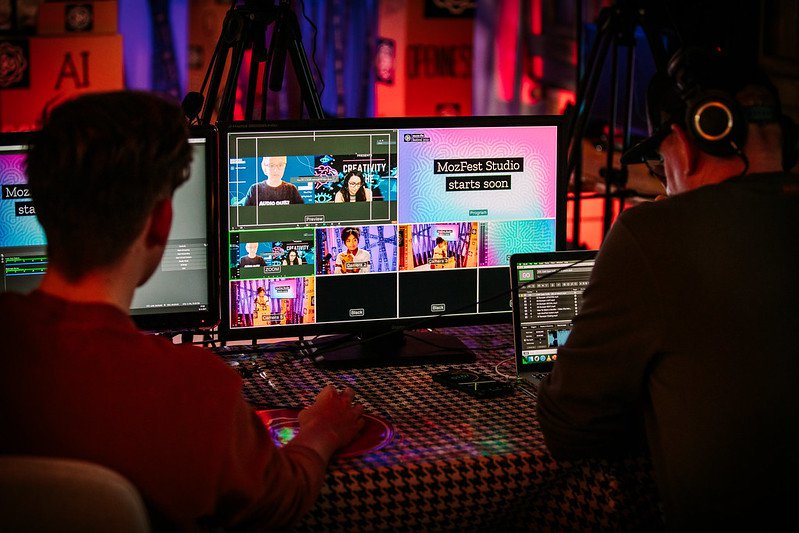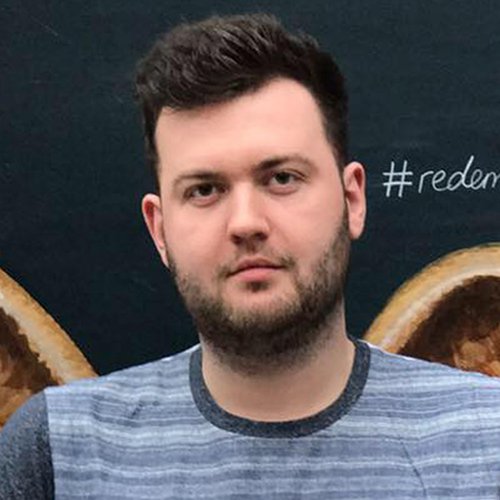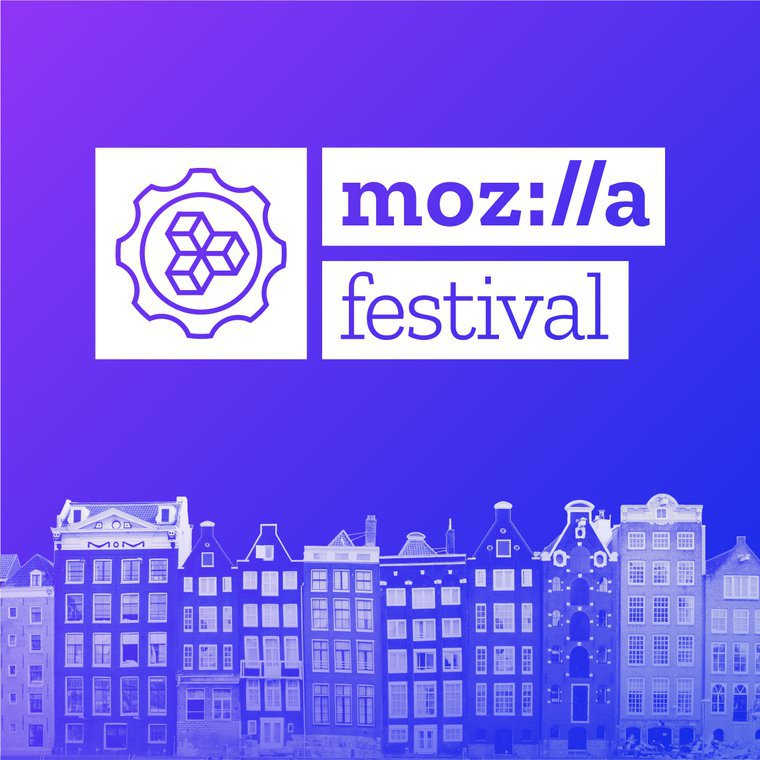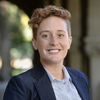MozFest 2021 was completely new to all of us - we were working from home and in time zones stretched across the world, planning for an event that would keep us at home rather than bringing us together.
Back in January 2020 we made the decision to base the next three years of MozFest in Amsterdam, and to ensure that we had enough time to build partners and our community there - we delayed the festival until March 2021. Little did we know then that this time would allow us to ensure what we’re building is both valuable and accessible to the community we have based internationally.
By December of last year we had researched, tested, and sought feedback from our community on the platforms we had chosen. Having used a criteria that focused on four areas: how they would work with the range of sessions taking place at the festival, user connectivity requirements, hardware requirements, as well as privacy and security.
We shared more details on how we built our decision making process for platform in our Building a Virtual MozFest blog.
We’re now able to look back at this criteria and decision making process, weighing the answers we collected from participants using the platform. Two of the biggest takeaways from this year are directly related to these criteria, and the event would not have been as participatory or engaging for our global audience without our focus on these.

A Global audience means designing for global connectivity.
What we learnt:
MozFest Facilitators and participants are based across the world: at this year’s festival we had representation from over 145 countries. The main problem we found with all encompassing platforms is that not everyone has equal access to the internet. Ten percent of those who answered our pre-festival survey told us they were accessing the internet using devices that relied on 2G, 3G or basic broadband connectivity of less than 2 megabits a second (Mbps).
The problem we faced:
Whilst researching the different platforms we could use, many had minimum requirements of an internet connection of at least 2 Mbps. So using these platforms without alternative ways of connecting would lead to us excluding a 1 in 10 of our participants - which isn’t acceptable for us.
How we solved the problem:
We built MozFest Plaza in a way that reduced the amount of data that was required to load at one time. Details for individual sessions had to be expanded, and we only showed speaker images when details were expanded or on the individual session page.
Using Zoom as the home of sessions and workshops allowed us to reduce our recommended connection speed to 1 Mbps. This still isn’t enough to ensure that everyone can actively participate in sessions, so we encouraged facilitators, if they see someone struggling with their connectivity in a session to ask everyone to mute their video - this further drops the recommendations to 60-80kbps so even those using 2G are able to take part. We also offered dial-in numbers for those without access to the internet.

Build a flexible structure and your participants will build the event.
What we learnt:
MozFest has always been organic and emergent. Sessions would appear out of nowhere, with a circle of chairs popping up in the unused space in the corner of a room. Designing for this open space is a lot more difficult when online - you’re more restricted in the resources you can allocate - and it normally requires a team member's input to make things happen, you're not just able to pull up a chair.
At times it was difficult to keep up with these ideas, there is always so much creativity that comes through on the call for proposals which fills us with a little bit of fear about how we're going to support the incredible ideas.
The problem we faced:
The main problem we faced whilst building MozFest 2021 is the interoperability between the different platforms that we are looking at using. It's important when designing a festival at scale such as ours with over 800 different sessions, 900 facilitators and 10,000 attendees, that as many of the processes that we put in place were automated.
Without automation we would've struggled to be able to support everyone involved and ensure the continuity of the festival remained.
How we solved the problem:
When designing the platforms we had to make sure that we were building a structure that people were able to build within. Since we design in an open way, the facilitators and wranglers are able to piece together the festival within the structure.
That structure must be able to flex and change itself as needed. There were two main reasons we were able to accomplish this.
The first is that we went for the distributed model over a one-size-fits-all. The distributed model allowed people to bring their own ways of meeting together, or collecting notes. Whilst we offered Zoom Room and Miro Boards, Facilitators were also able to add links to their Google Docs, Slideshows, as well as websites.
Then second is that we used open source software for our curation and Plaza. Not only did this give us the opportunity to work closely with the developers of these platforms, but also we were able to sponsor new features where they didn’t quite meet our needs.
An example of this was how we were able to link our Plaza to PreTalx (our curation tool), working with the developers of Plaza to use PreTalx’s API and then sponsoring a feature to allow for the different tags for each session to be visible on the API.
Overall, my biggest learning to share from MozFest this year is to never underestimate the ways your audience will show up. Design for flexibility and openness, understanding that trying to fix one issue could lead to another for a different participant. Instead you need to have a strong, open and adaptable framework - your audience can and will use that space to build what they need with the tools you provide.
We’ll take this learning into our planning for MozFest 2022 - we’re still working through how we imagine the festival appearing and what or if a hybrid can be. If you’re interested in learning more behind our plans for 2022, you can become a festival insider.
If you’re interested in learning more about the tech that went into MozFest 2021 you can read a blog post by our Lead for Streaming Communications, Andy Kochendorfer.

Marc Walsh (@marcwalsh) is the Digital Producer for Mozilla Festival. At Mozilla, Marc focuses on connecting the MozFest community online both at the virtual festival in 2021 and beyond.
MozFest is part art, tech and society convening, part maker festival, and the premiere gathering for activists in diverse global movements fighting for a more humane digital world. To learn more, visit www.mozillafestival.org.
Sign up for the MozFest newsletter here to stay up to date on the latest festival and internet health movement news.









